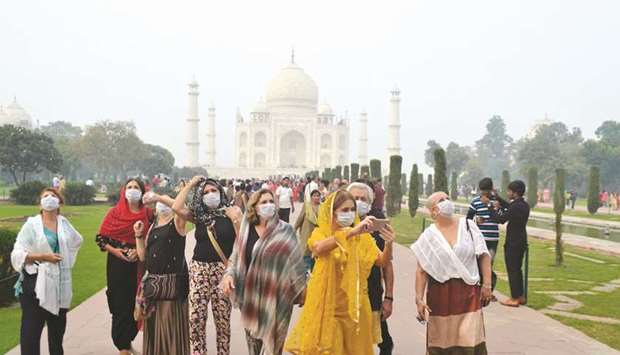Thick fog during winters has been forcing airlines to cancel and delay flights in Delhi for years, but alarmingly high level of air pollution has emerged as a new challenge for air carriers and the airport operator.
At least 37 flights were diverted on Sunday due to poor visibility caused by a high concentration of smog in and around the Delhi airport.
The air quality and visibility marginally improved yesterday, but aviation experts see flight diversion a major cause for concern as it inconveniences thousands of passengers in just a few hours.
“The poor visibility cannot be assigned entirely to pollution, but it is certainly a major contributor. Policy makers need to do something about this on an urgent basis. Delay, diversion or cancellation of flights cause huge losses to airlines and inconvenience passengers,” said Rajan Mehra, CEO of Club One Air.
Many experts say the problem of pollution in Delhi is largely man-made and can be rectified. They blame vehicular emission, large cluster of industries, stubble burning in neighbouring states and burning of firecrackers during the festive season.
“It is not natural. It is completely man-made. The government should show strong willpower to tackle the issue. Many times the government does not want to act given that farmers constitute a big vote bank and hence they are not stopped from burning stubble,” an airline executive said wishing not to be named.
According to an executive working at the Delhi airport, the visibility had fallen to 50m on Sunday leading to the diversion of flights to nearby cities like Amritsar, Jaipur and Lucknow.
With the national capital fast becoming a hotspot of pollution, it has drawn international attention. The city is seen as one of the most polluted in the world.
The Supreme Court meanwhile slammed the authorities for the deteriorating conditions.
“Why do you call it air emergency? This is worse than ‘The Emergency’. Emergency days were better,” said Justice Arun Mishra at the appalling state of affairs where the central and state governments were at loggerheads instead of acting together in curbing air pollution, especially in the case of stopping stubble burning.
In 1975 on June 26, then president Fakhruddin Ali Ahmed proclaimed a national emergency across India which lasted 21 months. As a consequence, elections were suspended and civil liberties were curbed. This period is considered one of the most controversial times in the history of independent India. Opponents of then prime minister Indira Gandhi were imprisoned and the press was censored.
Justice Mishra said the time has come to fix accountability and stop violation of Article 21 of the constitution, where “protection of life and personal liberty is prioritised and no person shall be deprived of his life or personal liberty except according to procedures established by law.”
The court’s observation came during the argument on the actions of farmers which have caged the Delhi and surrounding regions in an envelope of smog having severe health impact.
Justice Mishra also emphasised that no farmer has the right to violate other people’s rights.
“This is damaging humanity,” he said, citing the menace of air pollution. The period of ‘The Emergency’ is also considered a dark period for human rights violation. Justice Mishra reiterated that due to air pollution “people are dying and crying” as the agencies concerned have left them helpless.

Foreign tourists wearing face masks visit the Taj Mahal under heavy smog conditions, in Agra yesterday. Authorities also parked a van with an air purifier near the iconic 17th-century marble mausoleum 250km south of Delhi.


